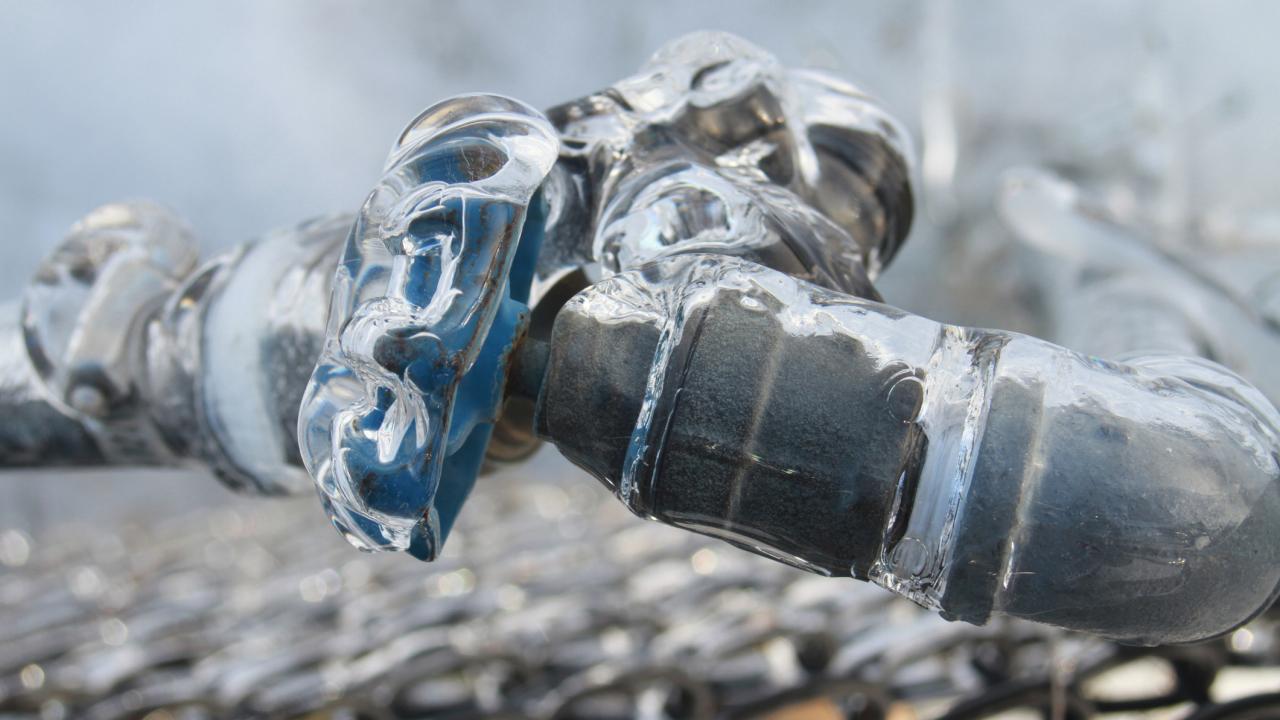Avoiding Frozen Plumbing in Cold Weather: Key Strategies
Avoiding Frozen Plumbing in Cold Weather: Key Strategies
Blog Article
What are your opinions concerning Helpful Tips to Prevent Frozen Pipes this Winter?

Cold weather can wreak havoc on your plumbing, particularly by freezing pipelines. Below's how to avoid it from taking place and what to do if it does.
Introduction
As temperature levels decrease, the threat of icy pipelines increases, potentially causing pricey repair work and water damages. Understanding just how to prevent frozen pipelines is crucial for property owners in chilly environments.
Prevention Tips
Shielding vulnerable pipes
Cover pipes in insulation sleeves or utilize warmth tape to safeguard them from freezing temperatures. Focus on pipes in unheated or outside locations of the home.
Heating methods
Keep indoor rooms appropriately heated up, especially areas with plumbing. Open up cabinet doors to enable cozy air to circulate around pipes under sinks.
Just how to determine frozen pipes
Try to find lowered water circulation from faucets, uncommon odors or sounds from pipes, and visible frost on subjected pipes.
Long-Term Solutions
Structural modifications
Take into consideration rerouting pipes far from outside walls or unheated areas. Add additional insulation to attic rooms, basements, and crawl spaces.
Upgrading insulation
Buy top notch insulation for pipelines, attic rooms, and walls. Correct insulation helps keep consistent temperatures and lowers the risk of frozen pipes.
Securing Exterior Plumbing
Garden hose pipes and outdoor taps
Detach and drain pipes yard hose pipes prior to wintertime. Mount frost-proof spigots or cover exterior faucets with shielded caps.
Understanding Icy Pipes
What creates pipes to ice up?
Pipes freeze when revealed to temperatures listed below 32 ° F (0 ° C) for extended durations. As water inside the pipelines ices up, it expands, putting pressure on the pipeline walls and potentially triggering them to break.
Threats and problems
Frozen pipes can cause water supply disturbances, residential property damages, and pricey repairs. Ruptured pipelines can flooding homes and trigger substantial architectural damage.
Indicators of Frozen Piping
Recognizing icy pipes early can avoid them from bursting.
What to Do If Your Pipelines Freeze
Immediate activities to take
If you believe icy pipes, keep taps open up to eliminate stress as the ice melts. Use a hairdryer or towels soaked in warm water to thaw pipes gradually.
Final thought
Stopping frozen pipelines calls for positive actions and quick responses. By understanding the causes, indicators, and preventive measures, home owners can secure their pipes during winter.
5 Ways to Prevent Frozen Pipes
Drain Outdoor Faucets and Disconnect Hoses
First, close the shut-off valve that controls the flow of water in the pipe to your outdoor faucet. Then, head outside to disconnect and drain your hose and open the outdoor faucet to allow the water to completely drain out of the line. Turn off the faucet when done. Finally, head back to the shut-off valve and drain the remaining water inside the pipe into a bucket or container. Additionally, if you have a home irrigation system, you should consider hiring an expert to clear the system of water each year.
Insulate Pipes
One of the best and most cost-effective methods for preventing frozen water pipes is to wrap your pipes with insulation. This is especially important for areas in your home that aren’t exposed to heat, such as an attic. We suggest using foam sleeves, which can typically be found at your local hardware store.
Keep Heat Running at 65
Your pipes are located inside your walls, and the temperature there is much colder than the rest of the house. To prevent your pipes from freezing, The Insurance Information Institute suggests that you keep your home heated to at least 65 degrees, even when traveling. You may want to invest in smart devices that can keep an eye on the temperature in your home while you’re away.
Leave Water Dripping
Moving water — even a small trickle — can prevent ice from forming inside your pipes. When freezing temps are imminent, start a drip of water from all faucets that serve exposed pipes. Leaving a few faucets running will also help relieve pressure inside the pipes and help prevent a rupture if the water inside freezes.
Open Cupboard Doors
Warm your kitchen and bathroom pipes by opening cupboards and vanities. You should also leave your interior doors ajar to help warm air circulate evenly throughout your home.

We had been made aware of that write-up on 6 Ways to Prevent Frozen Pipes from an acquaintance on our other web address. Are you aware of another person who is interested by the subject? Why not share it. Thanks a lot for going through it.
Top Article Report this page